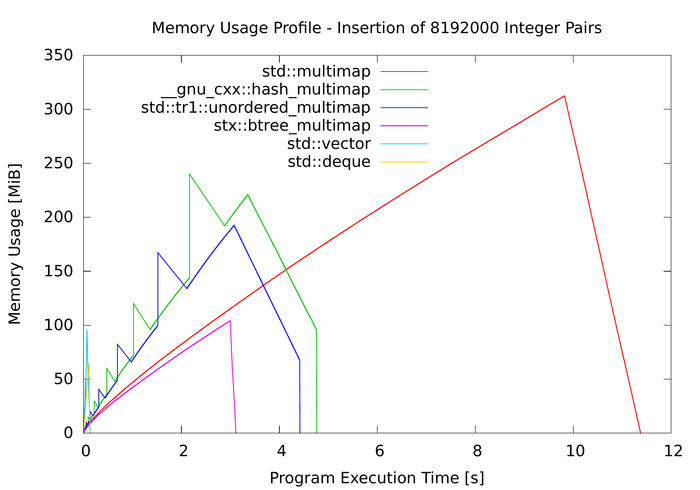Released STXXL 1.4.0
Posted on 2013-12-12 16:50 by Timo Bingmann at Permlink with 0 Comments. Tags: #c++ #university #stxxl
STXXL is an implementation of the C++ standard template library STL for external memory (out-of-core) computations, i.e., STXXL implements containers and algorithms that can process huge volumes of data that only fit on disks. While the compatibility to the STL supports ease of use and compatibility with existing applications, another design priority is high performance.
The project was originally created by Roman Dementiev and Peter Sanders at MPI Informatik in Saarbrücken. It moved to Karlsruhe with them in 2004. After Roman's PhD defense, there was a cooperation with the Algorithm Engineering group at the University of Frankfurt to create better parallel asynchronous sorting. Afterwards, stewardship moved to Frankfurt, where work on flash/SSD drives and various external memory graph algorithms was done.
After a longer stretch without further work, I have decided to take part in future development as a maintainer. This is partly due to my previous experience with it while implement in eSAIS, the external memory suffix and LCP array construction algorithm. And thus, today, the first release of the new 1.4 branch was published:
What's new in 1.4.0 ?
- reorganized source hierarchy into include/ lib/ tests/ examples/ doc/ tools/
- CMake build system for cross-platform compilation
- greatly improved documentation with tutorials and examples
- efficient external matrix operations
- new containers
stxxl::sequenceandstxxl::sorter - improved .stxxl disk configuration files and additional options
- combined stxxl_tool of disk benchmarks
- simple examples and skew3 as real-world stream application
- support for Visual Studio 2012 and 2013 without Boost
- important bug fixes in
stxxl::queueandstxxl::priority_queue











